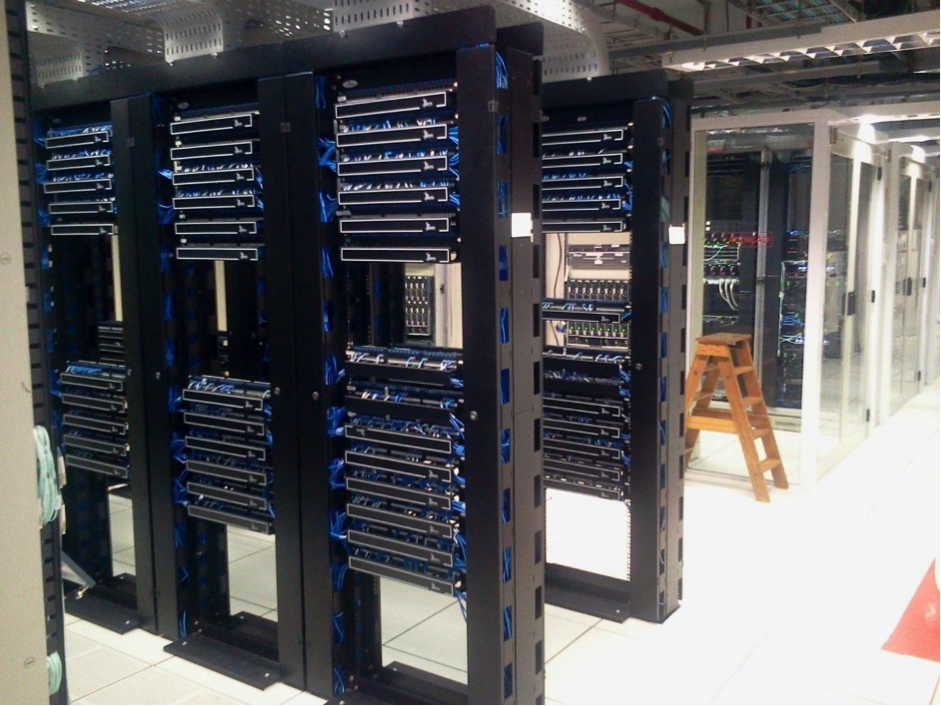Experian is one of the largest credit rating firms in the world. However, you might not hear of the company until you are turned down for a credit card. If it hasn’t dawned on you yet, an organisation like this would hold a massive amount of data on millions of people around the world. They likely know as much about you as Google does.
The company provides data and analytic tools to help banks take control of credit risk and help individuals check their credit score. However, Experian is not all about credit. They also use all that data to analyse behaviour and try to predict fraud, protect against identity theft, and automate decision making, among others.
Experian’s Data Centres
With all the data that Experian holds and processes regularly, you must be wondering what its data centres might be like.
Present in over 50 countries, the company runs Tier III and Tier IV data centres in Texas, Nottingham, Brazil, and Asia. In the UK, the company runs two data centres, including Fairham House, located in Ruddington near Nottingham. This was constructed in 2004 for £36.1m. The single-story establishment covers 78,000 square feet with 16,000 square feet of expansion space and provides solutions to 44 different countries. As the company’s primary production centre in the UK, the Tier IV data centre is highly IT redundant and resilient. It runs a good number of power feeds, six transformers, four generators, three computer halls with 27 air conditioners and four electric chiller systems to cool these halls.
They have over 3,300 servers with 53% of these, virtual servers, and as far as storage goes, they have more than 10 petabytes of online storage. With staff rotating three shifts, the control room runs all day, all year long, and could have up to 20 staff monitoring the facility’s systems and IT systems during activity spikes.
Experian’s Data Centre Services Director, Barry Westbury says that Experian has tried to eliminate any points of failure in their infrastructure. It is no surprise that a company like Experian would take security very seriously – Fairham House has multiple anti-virus systems and two firewalls installed. Twelve miles away from Fairham House, the company built a backup establishment serving as a disaster recovery site, linked to the main facility by various 640 Gbps dark fibre. They had built a facility in Texas two years earlier with similar features, except that with the UK facility, new advancements that were unavailable earlier were factored in when setting up the place.
Energy Savings and Greater Efficiency
The firm prioritises running on virtual servers as much as possible, and when they can’t, they run on blade servers, and when applications can’t be run there, they run on physical machines. Server virtualisation involves using a software application to divide one physical server into various remote domains. It allows the company to avoid server sprawl, helping them to make more efficient use of server resources, aiding disaster recovery, and enhancing server availability. This technology is in use at some top tier domain hosting solutions providers.
Data centres are estimated to consume up to 1.5 percent of electricity in the world. Power Usage Effectiveness (PUE) measures how efficient a data centre is at using energy. This is the ratio of the amount of energy the data centre uses to the energy used by equipment. While an ideal PUE would be 1.0, average PUE of data centres ranges from 1.6 to 1.9. Experian’s PUE is between 1.5 and 1.3, an improvement from a previous 2.0.
Experian continues to put considerable efforts into making their operations more energy-efficient. They managed to reduce their PUE when they were able to slow their cooling fans down by 20 percent, allowing them to use 50 percent less fan power, and to raise the ambient temperature to between 23 and 25 degrees Celsius. The company also installed lighting controls in all data halls.
Consider this comparison – previously, Experian had used servers that consumed up to 900 watts of power. But now, one of their virtual machines consumes only 25 watts.
Cold aisle containment is used to trap cool air that would otherwise have been wasted. This means they can save about 60 percent of cold air generated by their air conditioners, allowing them to generate only the minimum amount of air necessary for operations. Experian runs their fans at 60% of their maximum speed, and they are looking to reduce the speed even further.
Their system uses a large amount of chilled water that used to run through the central chilled water plant at six degrees Celsius, but they were able to increase that temperature to 9.5 degrees Celsius. This greatly reduces power consumption by cutting down the load on the chillers. They have also increased the air temperature above their servers from 22 degrees Celsius to about 27 degrees.
It didn’t take long before they started to gear their efforts towards using the more eco-friendly option of free cooling. They were intent on taking advantage of the climate in the East Midlands which had an average annual temperature of between 8 and 10 degrees Celsius, starting by testing the solution as a supplement to the existing cooling system. The firm was thinking in two directions – to pre-cool the chilled water system or use external air to cool the servers directly. For it to work, they would need to observe the external environment extensively, and to achieve this, the company worked with 4Energy, a local provider, using the SmartSet Software it developed.
They also took their energy-saving efforts to areas another company may consider mundane or insignificant – printers. Fairfam House uses centralised printing, where a document is only printed once. The operation is initiated by a user using a swipe card, with the document immediately routed to the activated printer. This way, the facility needs way fewer printers, and there is minimal paper wastage, reducing their carbon footprint in the long run.


